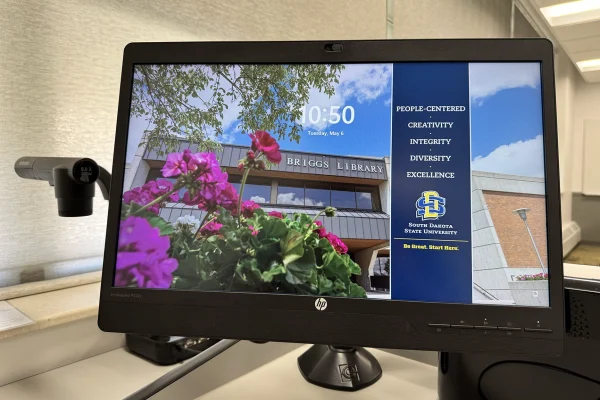New technology streamlines extension
September 20, 2011
The South Dakota Cooperative Extension Services will shut down all county offices this fall and launch a new digital platform to meet budget constraints.
This means a big change in the way South Dakotans utilize Extension Services, closing its county offices and opening seven regional centers staffed by extension field specialists. That development means a new position to manage the regional centers.
The new model and platform is centered around the website, iGrow, which will house all Extension information and provide access to information independent of a physical Extension office.
iGrow operates on a $500,000 budget and uses existing extension staff. No new staff members have been hired, so extension runs the website by requiring current staff to devote 20 percent of their time to its development. In response to the budget cuts, certain programs will be offered on a cost recovery basis, although education services will remain free.
Emery Tschetter, the assistant director for Planning and Special Projects, said although iGrow is new, it’s a way to prepare for the future.
“iGrow is a new operating system. It’s a platform that Extension will teach on, and a better way to continue our one-hundred year history of science based outreach to South Dakota,” he said.
Tschetter also said SDSU students may see iGrow in their classrooms in the near future.
iGrow is a first of its kind program in the Midwest and – according to Dunn – has great potential for growth in South Dakota.
“We found we could improve the old Extension model and adapt to the budget cuts simultaneously,” he said. “This is very new technology.”
Youth Programs like 4H will also be affected.
The new extension model will support one full-time 4H position in each county with more than 10,000 children and one part-time 4H position for every 2,500 youths in smaller counties.
Some say this restructuring will have a big affect on small economies in rural South Dakota.
“Initially, it’s going to mean that each county will lose a job. That $40,000 salary rolls through the economy eight times, that will be about $320,000 per county that will be lost in economic activity,” said State Rep. Frank Kloucek. He also noted that as early as Oct. 21, 99 Extension educators may be out of a job.
Others view the restructuring as a positive change. Peter Nielson, assistant director of South Dakota’s 4H youth programs, said this would empower youth by allowing them easier access to information and resources.
“We are bridging technology and tradition,” Nielson said. “We want to bring youth to the table, and we want young people to access information for themselves. This will allow them to operate at a higher level.”
Dunn said in a statement that the old method of disseminating information was no longer necessary or practical.
“Given the budget reductions, face-to-face delivery as the primary teaching method for Extension is no longer financially practical or socially required for most audiences,” Dunn said, also noting that with South Dakota farmers and ranchers having some of the highest adoption rates of technology in the country.
“It didn’t make sense to keep offering them Extensions’ 100-year-old model,” he said. “We found we could adapt to budget cuts while also staying with the times.”
Chad Nielson, the Farmers Co-op Elevator agronomy manager, said he and farmers he knows will be affected little by the restructuring.
“I don’t know that most people need an Extension office anymore,” said Nielson. “Thirty years ago, it might have been a big deal. I don’t need to see them in person, I just pick up the phone.”
SDSU began researching possible operational alternatives to the current Extension model in August 2009 by surveying attendants of Dakotafest – the state’s largest agricultural festival – to see how they consume information. SDSU has pioneered much of the research related to how farmers consume information.
“Several similar corporate attempts at a program like this have been made in the agriculture industry, but what ensures our success is the unbiased nature of our information,” said Dunn.





















